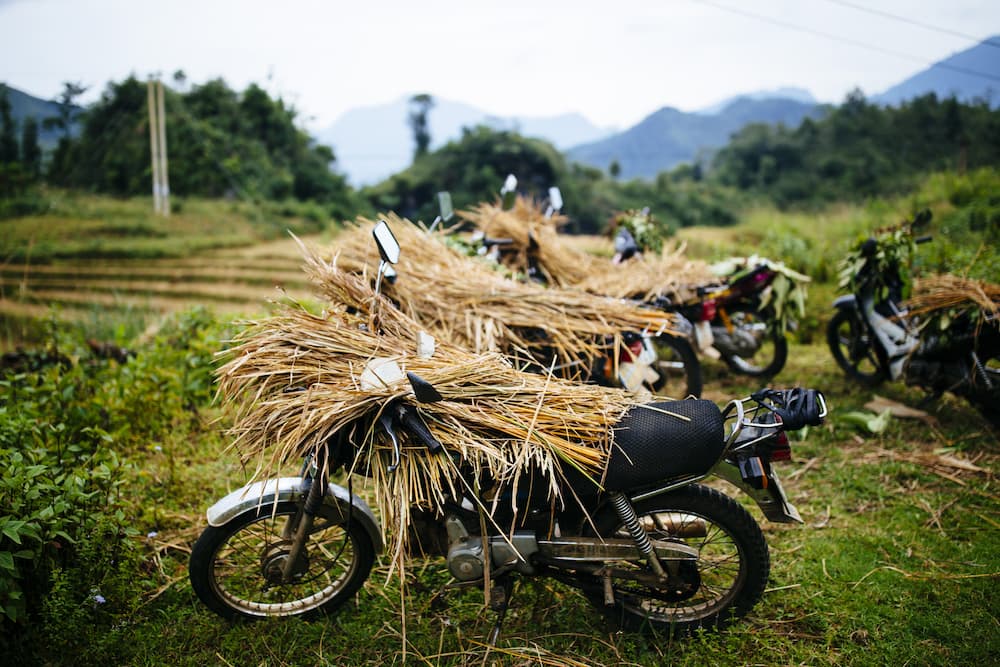
So, you want to travel to Vietnam but have never been before and you don’t know what to expect? Well, the first thing you have to do is apply for a visa, pay $25 for a one-entry/month and find a flight. Finding a direct flight could be the tricky part, but if you don’t mind the layovers in other East Asian countries, you will arrive safely at your chosen destination.
If you plan to visit the whole county, consider traveling domestically, because it takes more than 30 hours of driving to get from the north to the south of Vietnam. If you want to stay in one region, use motorbikes, Grabs (Vietnam’s Uber), or buses.
People tend to speak English, but only in the urban parts of a county. So if you are planning to visit rural areas, be prepared to use hand movement and a dictionary to get around. You should know, there are a lot of digital nomads in Vietnam so you can meet many people from the US and Europe. Here are some things they think every incomer should know about.
Best Time to Travel to Vietnam
Vietnam has a tropical climate and although some regions in the North experience all four seasons, there are only two that count – the dry and the rainy season. The dry season lasts from November to April, after which the monsoon season lasts from May to October. The heaviest rains fall during July and August.
If you are looking to travel through the whole country, do not go at the peak of summer. This is when the heaviest rains are falling, and it often causes deluges in the central and northern parts of Vietnam. Traveling during the mild rainy season can be fun, but mostly around the southern parts.
So, it is best to travel from the middle of February, after the national holiday, to the end of June, when the rains are starting to accelerate. However, Vietnam in June and August around the South coast has its perks; the rains do fall every day, but for a short amount of time, and you can enjoy sandy beaches for most of the day.
Vietnam’s Currency is the Vietnamese Dōng

Dōng in the Vietnamese language means money, so the official name for this country’s currency is the Vietnamese dōng. One Vietnamese dōng does not divide into smaller currency, unlike the US dollar that is divided into cents, dimes, and nickels. The dōng has been used in Vietnam since the 1970s.
There are no coins, and banknotes come in denominations of 1,000, 2,000, 5,000, 10,000, 20,000, 50,000, 100,000, 200,000, 500,000. Go to Vietnam to become a millionaire! One American dollar is a bit more than 22 thousand dōngs, so if you hold a million dōngs in your hands, you actually only have around 45 bucks.
Of course, bear in mind that a million dōngs can get you a lot of things and services in Vietnam since it is a very affordable country. If you are traveling on a budget, you are going to love the prices in farmers’ markets, bars, and local restaurants.
Accommodation Is Cheap
You can stay in Vietnam for prices that are next to nothing. There are places you can rent that are 10 dollars a night, although there is a chance your room is not getting air conditioning, or you may be sharing a bathroom with other people.
If you are not as adventurous as that, there are affordable places that charge 50 dollars a night, for a comfortable experience. Anything that costs more than 100 USD per night can be considered luxurious. So you can live lavishly on a budget!
Resorts are not a usual thing in Vietnam, but with the tourism industry evolving rapidly, so is the number of resorts, especially along the beaches in the south and on the islands. If you want something that feels familiar, big hotel chains have properties in all of Vietnam’s major cities, so you can stay in hotels such as the Sheraton, Hilton, and Park Hyatt.
While You Are There, Use a Motorbike

You know how the customer and the pedestrian are always right? Well, not as much in Vietnam. Over there, the power lies with the customers and the riders of motorbikes. That’s right, it is safer to ride a bike than to walk, due to traffic collapses and a total disregard of the rules.
You are about to travel to a country where more than 90% of all registered drivers drive a motorbike and where there are twice the motorbikes on the roads than there are people. So, when in Rome…
…Rent a motorbike. It is much easier to get around the city since there are often parking sports on the sidewalks that force you to step onto the dangerous road anyway. The good news is that the Vietnamese government ruled that it is illegal to ride a bike or be ridden on a bike without a helmet. If you are not an experienced rider, there are ‘’motorbike taxies’’, called Hug the Driver, or Xe Om in Vietnamese.
Taxies are not as expensive, but if you want to avoid haggling on the price, it is better to use Uber or Grab. However, these apps are available only in big cities. Buses and trains are outdated and uncomfortable, but they are cheap. Coaches, on the other hand, offer more comfort for just a few thousand more dōngs.
Bargaining Can Be Fun

Let’s just say that prices are just a concept in Vietnam. Chaffering is very common when you pay for services or when you buy items, especially at the farmers’ markets and in the street boutiques. As you are a foreigner, you will almost always be offered a higher price than the locals. Learn a few tricks, pack up your courage and patience, and bargain to lower the cost.
Remember that Vietnam is the place where many of the major brands have their manufacturing facilities, so you can find replicas of quality in the local boutiques. You can get a Nike replica for half or even a third of a price from the US prices. Negotiating doesn’t sound so bad now, right?
If you enjoy handmade clothes and unique designs, Vietnamese tailors are world-renowned for their skill and speed. And of course, let’s not forget the Vietnamese spa treatment, from hair salons, massages, manicures, and pedicures, you can enjoy the royalty treatment, for low prices. When negotiating a price of a service, make sure you don’t overstep and exaggerate, and respect the people and their work. It can be fun and memorable, all while being courteous.
Enjoy the Experience
Now that you know firsthand what the digital nomads living in Vietnam went through when they first visited, you are ready to explore. Arrive at the north of the country, to the capital city Hanoi, the center of culture and history of Vietnam. While you are in that area, visit some of the many national parks and mountains that are home to more than 30 different ethnicities. Visit Halong Bay and Bai To Long Bay, and enjoy the wonderful scenery, the sea, and the amazing food prepared with a love for tradition.
As you travel to the south, try and visit Hue, the city of the last Vietnamese imperial dynasty. You can stay in the city of Saigon, and visit many marvelous places in the South, both cultural and historical sites, as well as the natural wonders of Vietnam. Once you have seen all that you planned for your trip, it is almost certain that you will want to come back again.



